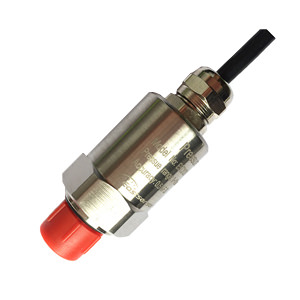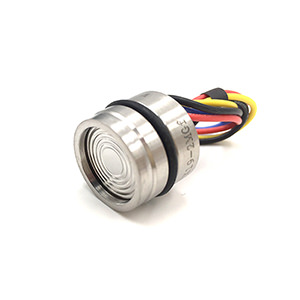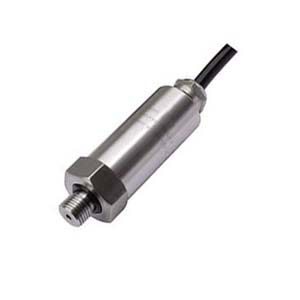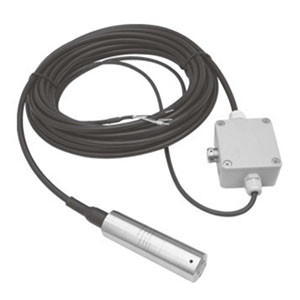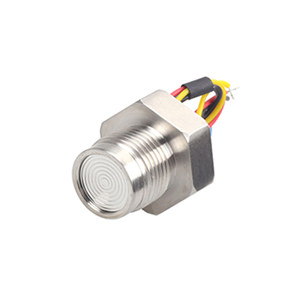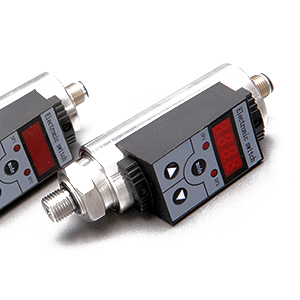Transducer Input / Output
An electrical input, called the excitation voltage, is required to operate a pressure transducer. This DC excitation can vary from 5-10VDC for unamplified transducers with millivolt output, to 8-36VDC for amplified transducers producing voltage or current output.
Eastsensor offer three electrical output options:
Below is a summary of these outputs with their pros and cons.
Millivolt (mV) Output
Pressure transducers with millivolt output are generally the most economical pressure transducers. They are often called “low-level” transducers because they are unamplified and only contain passive electronics necessary to develop and thermally compensate the low electrical output of the Wheatstone bridge. This also means they tend to be smaller and lighter than voltage or current output transducers.
EST330V is one of Eastsensor Millivolt output product, for details please refer to the article of Why you need Millivolt Output Pressure Transducers?
The actual output of these instruments is directly proportional, or ratiometric, to the excitation voltage. This means that if the excitation fluctuates, the output will change proportionally. As a result of this dependence on a steady excitation voltage, regulated power supplies are highly recommended.
Because the output signal is so low, a millivolt output transducer tends to be more affected by EMI and should not be located in an electrically noisy environment (hand radios, switch gear, electric motors, etc.). The distances between the transducer and the readout instrument should also be kept relatively short.
Transducers with a mV output signal typically have a better Response Time than most high-level output transducers because there is less electronic circuitry and no isolation of the excitation voltage from the output signal.
The basic passive electronics in these low-level transducers can withstand higher and lower temperatures than the active amplifying circuits used in high-level transducers. As a result, millivolt output pressure transducers are popular for use in high heat (+400°F) and cryogenic (-450°F) applications.
Voltage (VDC) Output Pressure Transducer
Voltage output pressure transducers are amplified and add higher level electronics to the low level passive circuit discussed above. This permits the integration of noise filtering, voltage regulation, excitation-to-output isolation, and advanced signal conditioning circuitry.
The additional components of high level output pressure transducers mean they are typically longer and heavier than low level transducers of the same pressure range.
A voltage output transducer provides a much higher output than a millivolt transducer (normally 0-5VDC) and its output can be isolated or non-isolated from the excitation voltage. Because the output of this transducer is not a direct function of excitation an unregulated power supply is sufficient, provided that it falls within a specified power range.
In addition, the higher level output of this type of electronic circuit is not as susceptible to electrical noise as millivolt transducers and can be used in many more industrial and aerospace environments where greater levels of EMI are found.
The compensated temperature ranges of these transducers generally extend from a low of -65°F [-54°C], to a high of +250°F [+121°C]. This is the normal maximum operational temperature range for active electronic circuits.
For most of Eastsensor product, they can be made of both voltage and 4-20mA output products, you can find model of EST330F, EST383, EST370, EST3110
Current (4 – 20 mA) Output Pressure Transducer
This type of high-level pressure transducer is also known as a pressure transmitter. Since a 4-20mA current signal is least affected by electrical noise and resistance in the signal wires, these transducers are best used when the signal must be transmitted long distances.
It is not uncommon to use these transducers in applications where the lead wire might be 1000 feet [305 meters] or more.
The excitation range of a Taber Industries 4-20mA unit is wider (8-36VDC) than that of transducers with voltage output, and elaborate EMI protection electronics are not necessary due to the nature of the current loop signal arrangement.
Because of this, there is less electronic circuitry and the Response Time is on a par with 0-5VDC non-isolated units.
For most of Eastsensor product, they can also be made of 4-20mA output products.
Wrapping Up
Voltage output transducers include integral signal conditioning which provide a much higher output than a millivolt transducer. The output is normally 0-5Vdc or 0-10Vdc. Although model specific, the output of the transducer is not normally a direct function of excitation. This means unregulated power supplies are often sufficient as long as they fall within a specified power range. Because they have a higher level output these transducers are not as susceptible to electrical noise as millivolt transducers and can therefore be used in much more industrial environments.
These types of transducers are also known as pressure transmitters. Since a 4-20mA signal is least affected by electrical noise and resistance in the signal wires, these transducers are best used when the signal must be transmitted long distances. It is not uncommon to use these transducers in applications where the lead wire must be 500 metres or more.
So, in short, you must look at your application to find out which output is the best to choose. For higher temperature applications the mV output should be the first consideration. For industrial environments with potentially unregulated power supplies, the voltage outputs will suffice, and for applications where your signal needs to transmit over long distances then a 4-20mA transmitter is perfect.
Still need help? Contact our offices for further help and advice.
Additional Posts which may be of interest
- Why you need Millivolt Output Pressure Transducers?
- Knowledge about Flush Diaphragm Pressure Transmitter
- What you should consider about before purchase pressure switches?
- Which Pressure Switch is suitable for you?
- Things you need to know about Diaphragm Pressure Gauges
- Do you really know your pressure sensor accuracy?
- Basic Knowledge You Need to Know about Pressure Gauge
- How to select Pressure Gauge?
- Pressure Switch V.S Pressure Transducer, what’s the difference?
- What is The Difference between Pressure Transducer and Pressure Transmitter?

